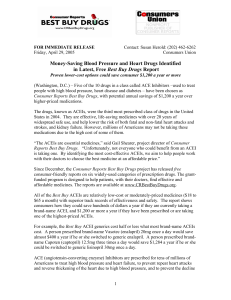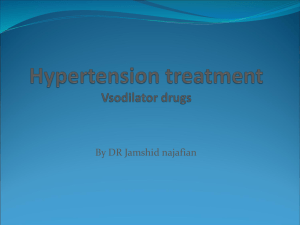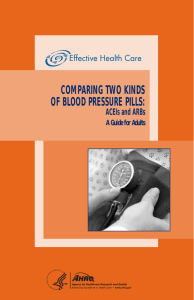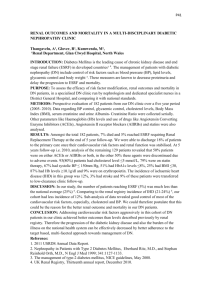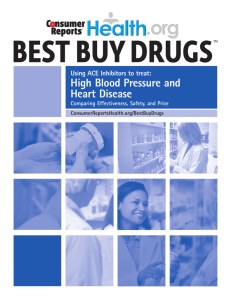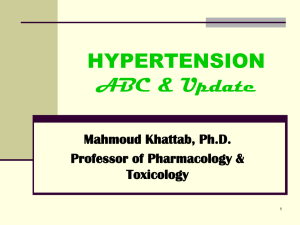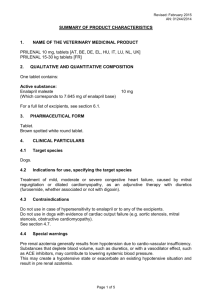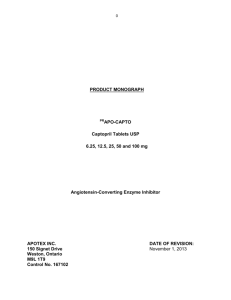Angiotensin conerting enzyme inhibitors toxicity
advertisement
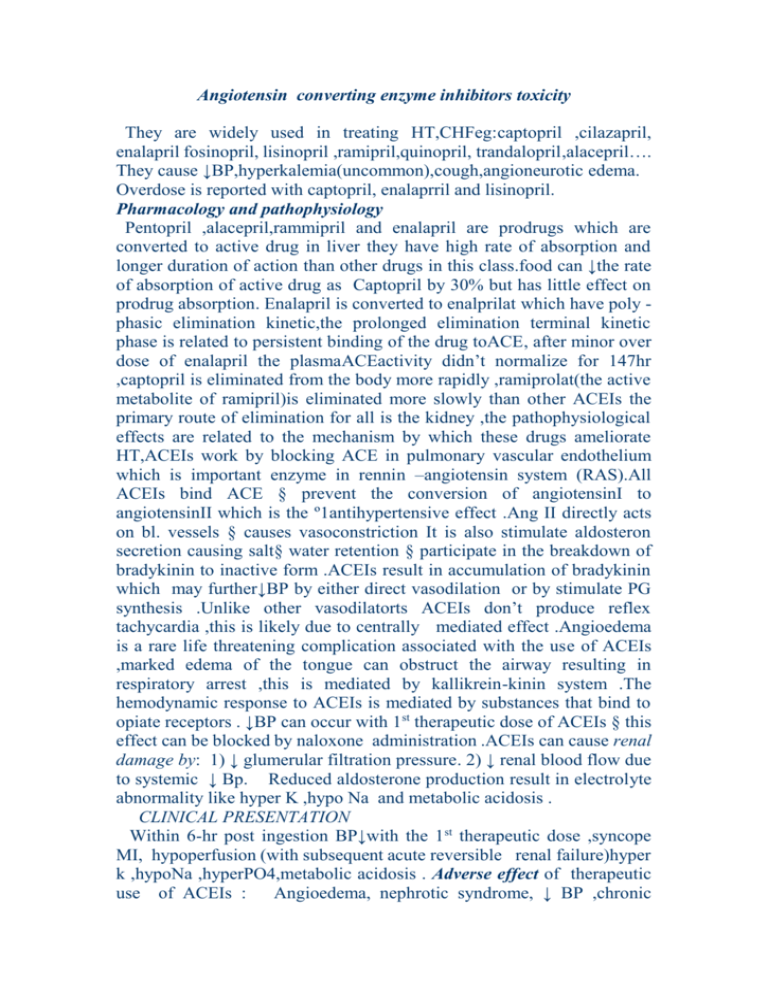
Angiotensin converting enzyme inhibitors toxicity They are widely used in treating HT,CHFeg:captopril ,cilazapril, enalapril fosinopril, lisinopril ,ramipril,quinopril, trandalopril,alacepril…. They cause ↓BP,hyperkalemia(uncommon),cough,angioneurotic edema. Overdose is reported with captopril, enalaprril and lisinopril. Pharmacology and pathophysiology Pentopril ,alacepril,rammipril and enalapril are prodrugs which are converted to active drug in liver they have high rate of absorption and longer duration of action than other drugs in this class.food can ↓the rate of absorption of active drug as Captopril by 30% but has little effect on prodrug absorption. Enalapril is converted to enalprilat which have poly phasic elimination kinetic,the prolonged elimination terminal kinetic phase is related to persistent binding of the drug toACE, after minor over dose of enalapril the plasmaACEactivity didn’t normalize for 147hr ,captopril is eliminated from the body more rapidly ,ramiprolat(the active metabolite of ramipril)is eliminated more slowly than other ACEIs the primary route of elimination for all is the kidney ,the pathophysiological effects are related to the mechanism by which these drugs ameliorate HT,ACEIs work by blocking ACE in pulmonary vascular endothelium which is important enzyme in rennin –angiotensin system (RAS).All ACEIs bind ACE § prevent the conversion of angiotensinI to angiotensinII which is the º1antihypertensive effect .Ang II directly acts on bl. vessels § causes vasoconstriction It is also stimulate aldosteron secretion causing salt§ water retention § participate in the breakdown of bradykinin to inactive form .ACEIs result in accumulation of bradykinin which may further↓BP by either direct vasodilation or by stimulate PG synthesis .Unlike other vasodilatorts ACEIs don’t produce reflex tachycardia ,this is likely due to centrally mediated effect .Angioedema is a rare life threatening complication associated with the use of ACEIs ,marked edema of the tongue can obstruct the airway resulting in respiratory arrest ,this is mediated by kallikrein-kinin system .The hemodynamic response to ACEIs is mediated by substances that bind to opiate receptors . ↓BP can occur with 1st therapeutic dose of ACEIs § this effect can be blocked by naloxone administration .ACEIs can cause renal damage by: 1) ↓ glumerular filtration pressure. 2) ↓ renal blood flow due to systemic ↓ Bp. Reduced aldosterone production result in electrolyte abnormality like hyper K ,hypo Na and metabolic acidosis . CLINICAL PRESENTATION Within 6-hr post ingestion BP↓with the 1 st therapeutic dose ,syncope MI, hypoperfusion (with subsequent acute reversible renal failure)hyper k ,hypoNa ,hyperPO4,metabolic acidosis . Adverse effect of therapeutic use of ACEIs : Angioedema, nephrotic syndrome, ↓ BP ,chronic cough,azotemia, rhinitis,rash ,arthralgia, agranulocytosis, the tongue and the soft tissue of the neck are affected ,some cases will resolve with treatment for allergic reaction like antihistamine ,corticosteroids.Other cases progress .fatality reported (in this case the massive edema led to airway obstruction requiring surgical interference, severe hypokalemia occur if ACEIs are taken with K supplement or K –sparring diuretic . captopril accentuate the respiratory depressive and the analgesic property of morphine . TREATMENT 1)Maintain airways by ventilator 2) Activated charcoal 3)0.9 %Nacl (crystalloid) 4)NE IV infusion or EP or DA infusion . 5)Naloxone to ↑BP ,angiotensinamide infusion or ang II infusion to↑BP 6)Hemodialysis esp in renal failure. 7) for angioedema use antihistamine , corticosteroids.
